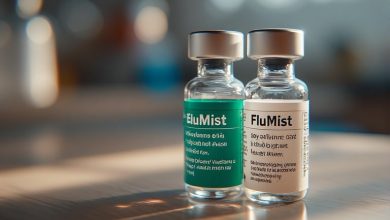
Red wine is celebrated for its rich flavors and healthful antioxidants—but for many, it comes with an unwelcome side effect: headaches. Recent studies suggest that a naturally occurring compound in red wine, quercetin, may be at the heart of this problem by interfering with how your body processes alcohol. In this article, we delve into the biochemistry of red wine headaches, explain the latest research findings, and provide actionable tips to help you manage or even prevent these painful symptoms.

The Red Wine Headache Conundrum
Red wine headaches have puzzled consumers and scientists for years. Unlike hangovers caused solely by alcohol consumption, red wine headaches tend to occur within 30 minutes of sipping your favorite vintage. While factors like histamines, tannins, and sulfites were long suspected culprits, emerging research points to a different key player: quercetin, a flavanol abundant in red grape skins.
Key Points:
- Rapid Onset: Red wine headaches often strike within half an hour of drinking.
- Beyond Sulfites: Studies show that sulfites and tannins alone do not fully explain the phenomenon.
- A Biochemical Twist: New evidence indicates that quercetin may play a central role in triggering these headaches.
How Quercetin Interferes with Alcohol Metabolism
The Role of ALDH2 Enzyme
When you consume alcohol, your body converts ethanol into acetaldehyde—a toxic compound that contributes to hangover symptoms. Normally, the enzyme aldehyde dehydrogenase 2 (ALDH2) breaks down acetaldehyde into acetate, a harmless substance. However, quercetin and its metabolite, quercetin glucuronide, can inhibit ALDH2’s activity. This inhibition leads to an accumulation of acetaldehyde, which causes inflammation and, ultimately, headache symptoms.
Breaking Down the Process:
- Alcohol Metabolism: Ethanol is first converted into acetaldehyde.
- Enzyme Inhibition: Quercetin glucuronide disrupts the ALDH2 enzyme’s function.
- Toxin Buildup: Higher acetaldehyde levels lead to inflammation, flushing, nausea, and headaches.
This new biochemical insight helps explain why red wine, which contains higher levels of quercetin than white wine, is more likely to trigger headaches.
Red vs. White Wine: What Makes a Difference?
Composition Comparison
Red wine is unique compared to white wine because its production process includes prolonged contact with grape skins. This contact increases the concentration of flavonoids—especially quercetin. While white wine contains fewer phenolic compounds, it often has similar levels of sulfites, yet it is much less likely to cause headaches.
Comparison Overview:
- Red Wine: Higher quercetin and tannin content due to extended skin contact.
- White Wine: Lower flavonoid content; reduced potential for ALDH2 inhibition.
- Result: Red wine’s higher quercetin content may be the key factor in headache occurrence.
Practical Tips for Managing Red Wine Headaches
If you’re one of the many who suffer from red wine headaches, consider these strategies to reduce your risk while still enjoying your drink:
- Hydrate Well: Alternate wine with water to minimize dehydration.
- Choose Wisely: Look for red wines with lower quercetin levels. Some winemakers adjust grape exposure to sunlight, which can influence quercetin content.
- Moderate Consumption: Enjoy smaller servings to reduce the chance of acetaldehyde accumulation.
- Pre-Drink Measures: Consider a light snack before drinking, which can slow alcohol absorption.
- Monitor Your Response: Keep track of which wines trigger headaches and adjust your choices accordingly.
Frequently Asked Questions (FAQ)
1. Why does red wine cause headaches while white wine often does not?
Red wine contains higher levels of quercetin—a flavanol that inhibits the ALDH2 enzyme responsible for breaking down acetaldehyde. White wine, with its lower quercetin content, is less likely to cause this enzyme inhibition.
2. Can changing my wine selection help prevent headaches?
Yes. Wines produced with less sun exposure or those that naturally have lower quercetin levels may reduce the likelihood of headaches. Experiment with different varietals to find one that suits you best.
3. Is there a way to counteract the effects of quercetin?
While research is ongoing, practical measures such as staying hydrated, eating before drinking, and moderating intake can help minimize acetaldehyde buildup and its associated headache symptoms.
4. Are there any long-term health risks associated with quercetin?
Quercetin is generally considered a healthy antioxidant. The issue arises when it interferes with alcohol metabolism in susceptible individuals. Moderation is key.
Understanding the science behind red wine headaches is a game changer for wine lovers. The inhibition of ALDH2 by quercetin glucuronide offers a compelling explanation for why red wine can sometimes lead to an immediate headache. By choosing wines wisely, staying hydrated, and moderating your intake, you can continue to enjoy red wine while minimizing the risk of discomfort.
Stay informed and enjoy your wine smartly—your body and taste buds will thank you.


